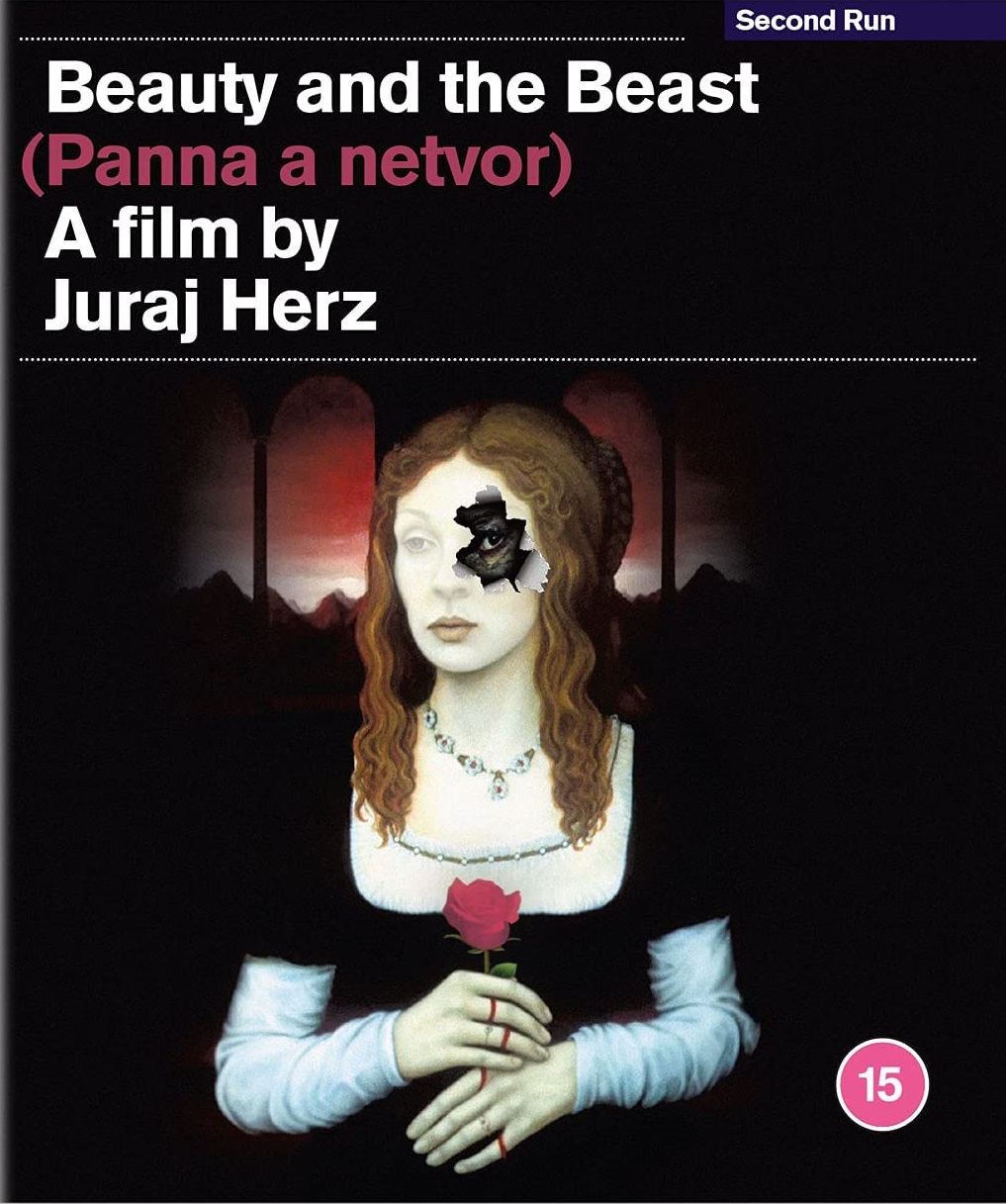Beauty and the Beast? Not quite; the Czech title of Juraj Herz’s 1978 fantasy is Panna a netvor, which translates, much more fittingly, as The Virgin and the Monster. This new release has a 15 certificate, a clear hint that the film wasn’t aimed at the under-tens. Ota Hofman’s version of poet František Hrubín’s stage script had been adapted as a children’s television film in 1971; Herz was initially unenthusiastic about directing a further adaptation, feeling that Jean Cocteau’s La Belle et la Bête couldn’t be improved upon. Panna a netvor makes for a darker, chillier companion piece to Cocteau’s fairy-tale.
The mood is set by the first glimpse of the village where Zdena Studenková’s Julie lives with her father and stepsisters. Chickens and pigs are slaughtered, noisily, the blood cascading in torrents. You can smell the filth; it’s striking how few period dramas portray squalor with this degree of accuracy. Julie’s greedy stepsisters are pantomime villainesses, her weak-willed father Otec (Václav Voska) too naïve to assert himself, worrying whether he has sufficient funds to pay for their weddings. The scene where the carriages containing Otec’s property take a tumble is brilliantly staged, the fate of the one female character signalling that this particular forest isn’t a place to linger.
 Hofman and Hrubin’s screenplay follows the original story closely, though Herz’s take is grittier, harsher and more violent. There are nods to Cocteau: the Beast’s castle contains a line of animated statues, and disembodied hands carry out menial tasks. Vladimír Labský’s extravagant set is terrific, a damp, decaying ruin, complete with an actual swamp. Poor Julie sips drugged wine shortly after arriving, tumbling into a four-poster bed whose posts are writhing human figures, the bed’s ceiling descending and trapping her. She dreams of her captor in human form (played here by dancer Vlastimil Harapes), making our first real glimpse of him all the more frightening, the Beast a pointy-beaked, sharp-clawed creature clad in a ragged black cape. Glimpses of Harapes’ eyes give us hints of the character’s compassion, but he’s still a monster. Herz doesn’t give us any backstory; we have no idea what’s happened to this Beast, or why.
Hofman and Hrubin’s screenplay follows the original story closely, though Herz’s take is grittier, harsher and more violent. There are nods to Cocteau: the Beast’s castle contains a line of animated statues, and disembodied hands carry out menial tasks. Vladimír Labský’s extravagant set is terrific, a damp, decaying ruin, complete with an actual swamp. Poor Julie sips drugged wine shortly after arriving, tumbling into a four-poster bed whose posts are writhing human figures, the bed’s ceiling descending and trapping her. She dreams of her captor in human form (played here by dancer Vlastimil Harapes), making our first real glimpse of him all the more frightening, the Beast a pointy-beaked, sharp-clawed creature clad in a ragged black cape. Glimpses of Harapes’ eyes give us hints of the character’s compassion, but he’s still a monster. Herz doesn’t give us any backstory; we have no idea what’s happened to this Beast, or why.
A few flashes of black humour lighten the mood, notably when Julie is able to visit her stepsisters, who are less interested in her than they are in her diamond necklace and posh frock. The ending is abrupt and a tad ambiguous, entirely in keeping with what’s gone before. An extraordinary work; if you know and love La Belle et la Bête, you need to see this. Second Run’s release comes with a bonus commentary from the team behind The Projection Booth podcast, and a detailed booklet essay from film historian Jonathan Owen. He neatly traces Herz’s post-Prague Spring career, marvelling at the fact that Panna a netvor was made at all. We learn that the studio head was bombarded with letters from parents complaining that their children had been left traumatised, one Czech cultural official telling Herz, “You promised us a fairy-tale and you made a horror film!”















Add comment